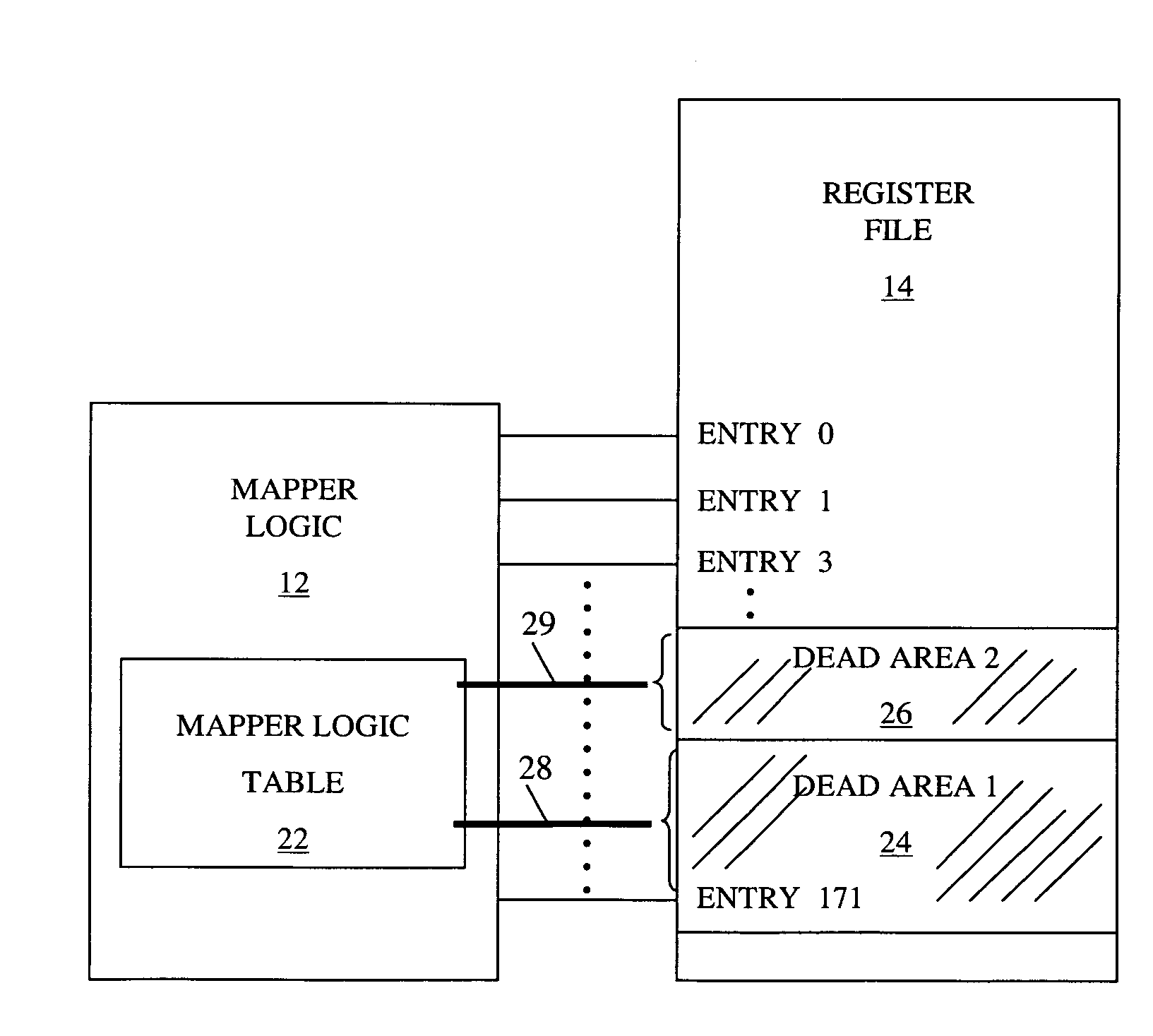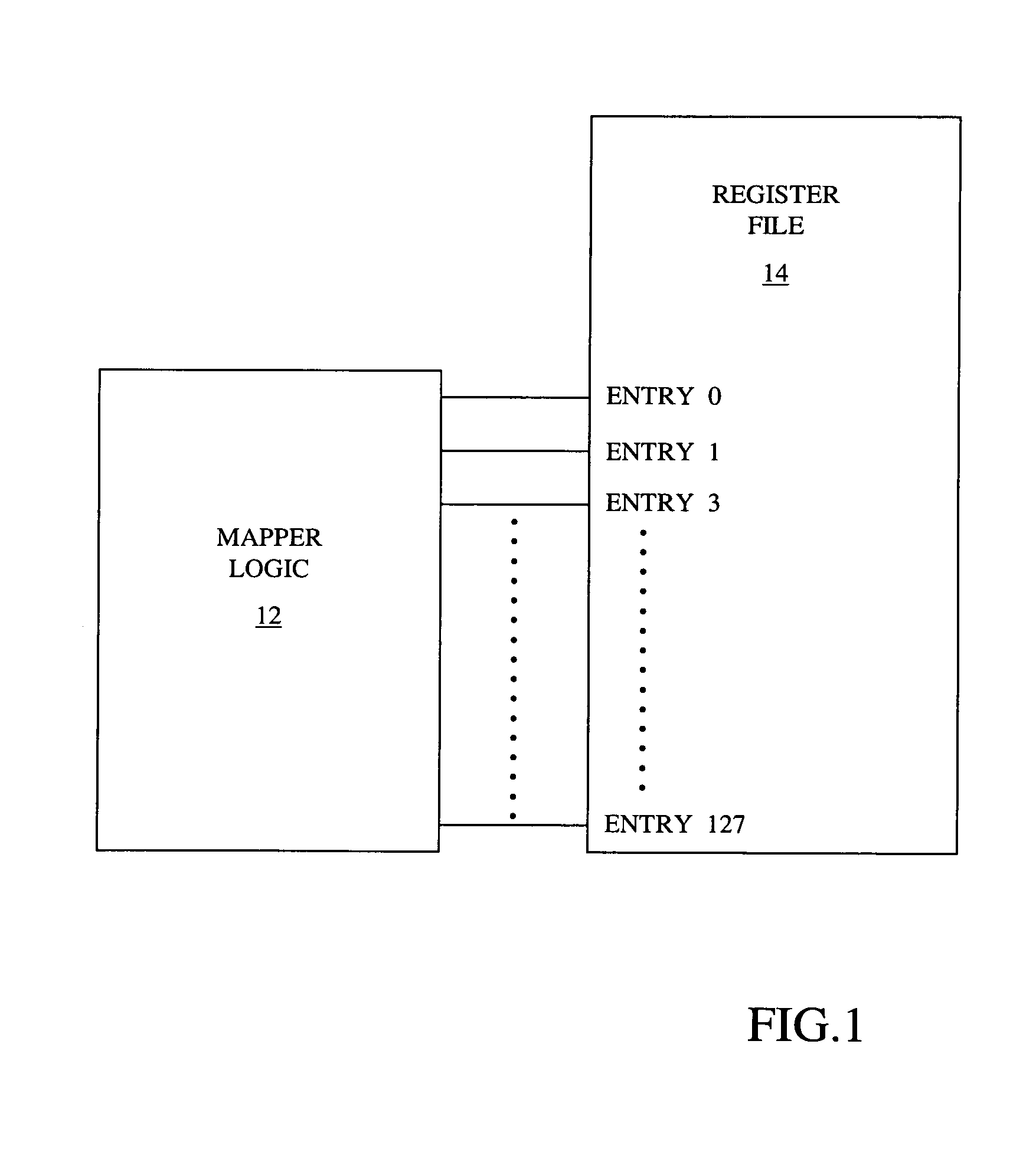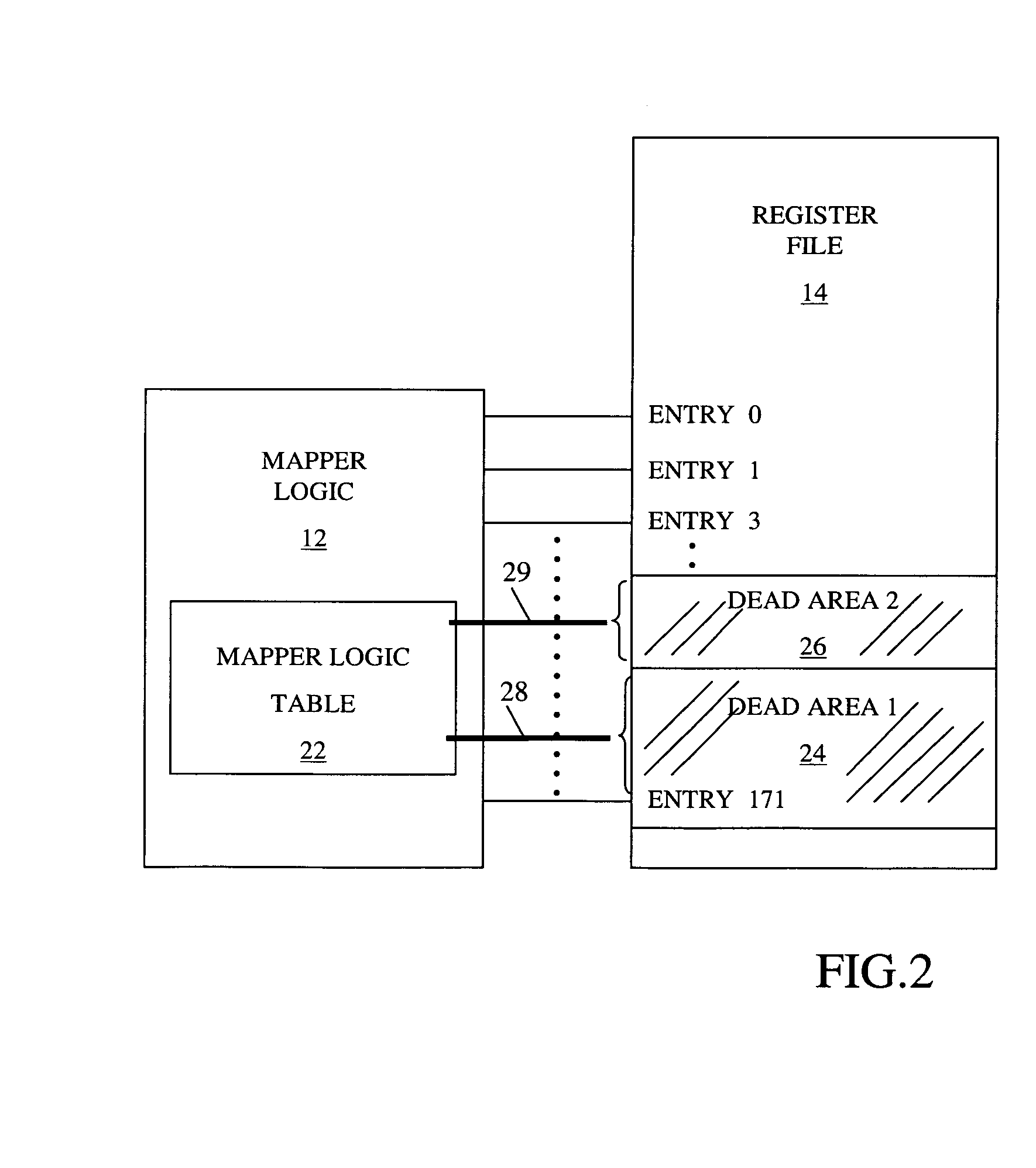Method to Reduce Power Consumption of a Register File with Multi SMT Support
a register file and multi-smt technology, applied in the field of microprocessor architecture, can solve the problems of significant power dissipation, serious and obstacle, and inability to switch off the power from certain physical register entries of the register fil
- Summary
- Abstract
- Description
- Claims
- Application Information
AI Technical Summary
Benefits of technology
Problems solved by technology
Method used
Image
Examples
Embodiment Construction
[0020]Referencing to FIG. 2, the mapper logic previously described is modified by logic 22, which implements the method steps described in FIG. 4. Logic 22 manages the overall register file space by switching off single regions or sub-areas 24, 26 in the register file 14, when they are not required during normal operation of the SMT processor. The control to switch OFF and ON sub-areas 24 and 26 is accomplished via control lines 28 and 29, respectively which have a fan-out for each entry of the sub-areas.
[0021]FIG. 3 shows an exemplar mapper table entry dataset located in mapper logic 12. “DEAD bit”32 is introduced to ensure that a particular register file entry is not reallocated to a register file sub-area that has been disabled. Each physical entry of the register file will have a corresponding mapper entry. A prior art “USED”_-bit 34 is included in order to get information, when a sub-area is selected and made ready for powering down. This is the case, when all DEAD bits 32 of a...
PUM
 Login to View More
Login to View More Abstract
Description
Claims
Application Information
 Login to View More
Login to View More - R&D
- Intellectual Property
- Life Sciences
- Materials
- Tech Scout
- Unparalleled Data Quality
- Higher Quality Content
- 60% Fewer Hallucinations
Browse by: Latest US Patents, China's latest patents, Technical Efficacy Thesaurus, Application Domain, Technology Topic, Popular Technical Reports.
© 2025 PatSnap. All rights reserved.Legal|Privacy policy|Modern Slavery Act Transparency Statement|Sitemap|About US| Contact US: help@patsnap.com



